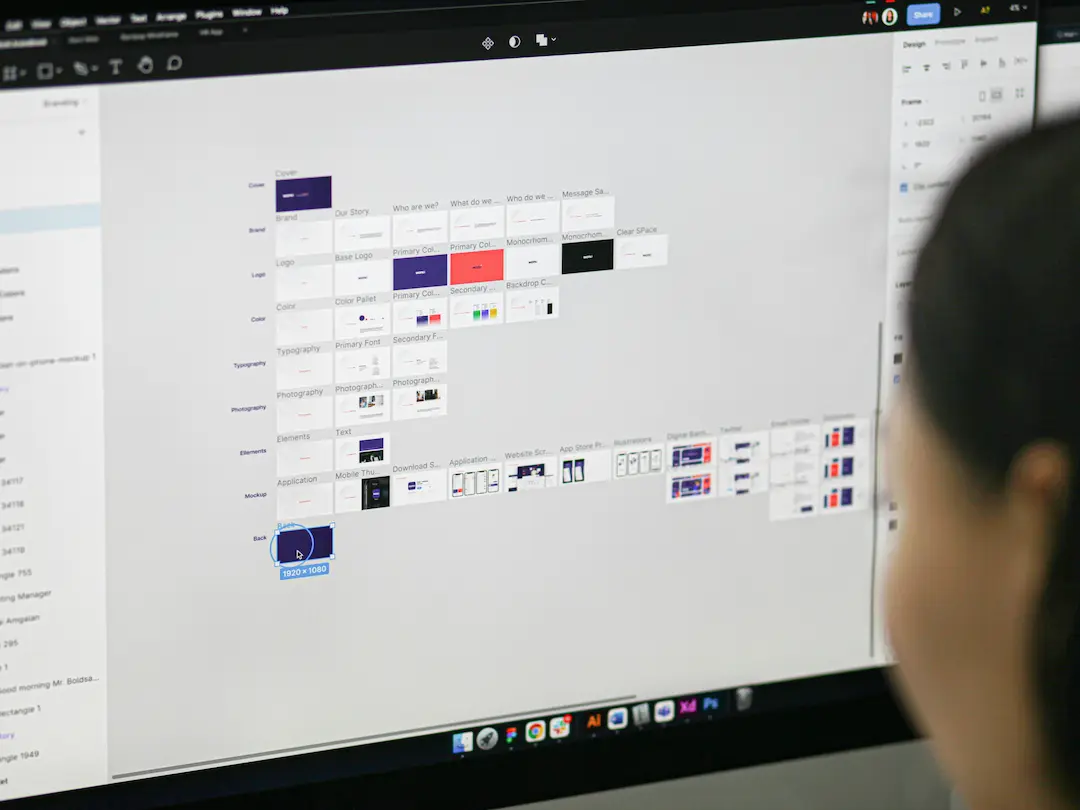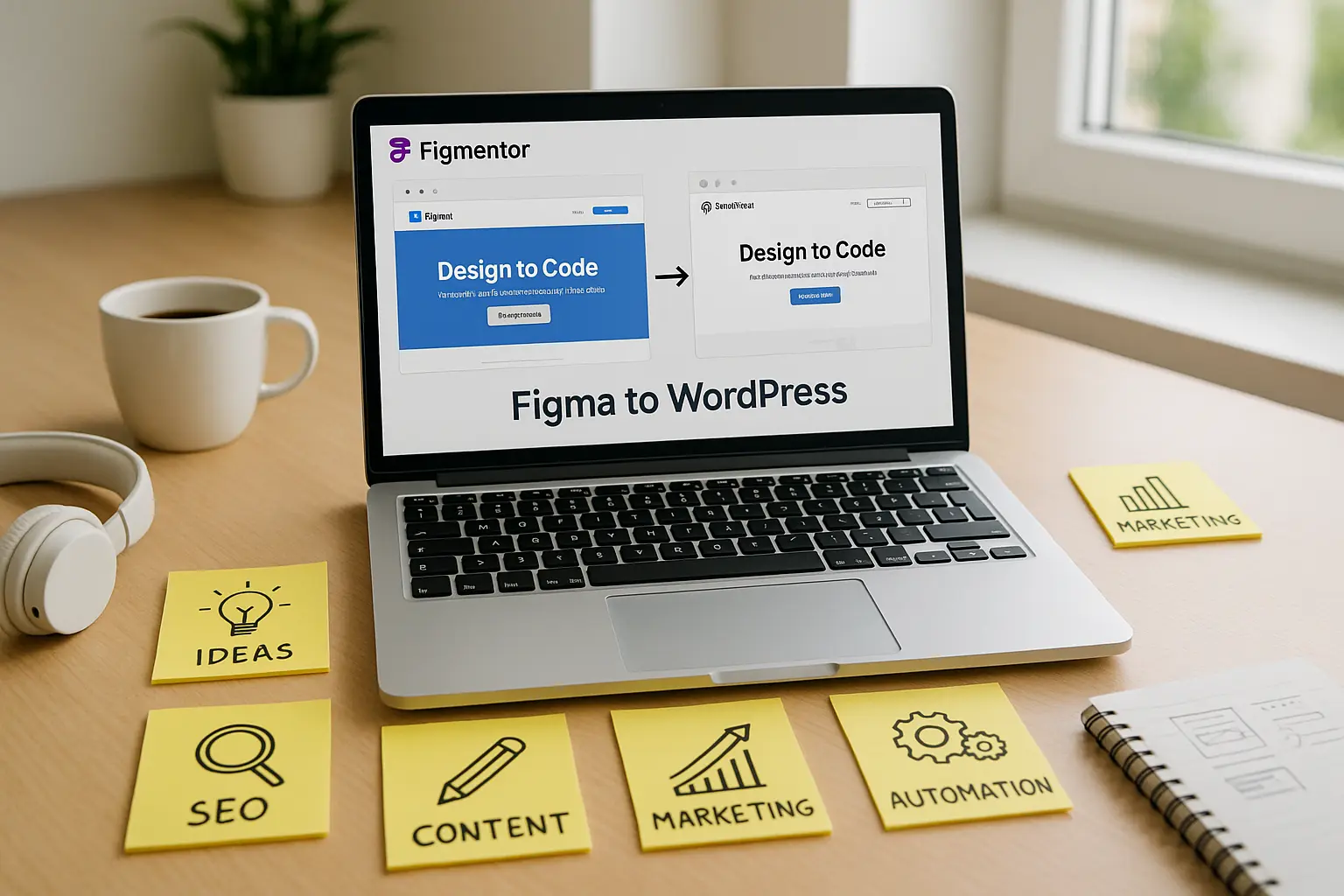Introduction
For years, designers have relied on developers to turn their Figma designs into functional WordPress websites. This dependency often leads to bottlenecks, miscommunication, and delays. But what if designers could skip the developer entirely and build WordPress pages directly from Figma?
Thanks to advancements in no-code and low-code tools, this is now possible. Designers can maintain full creative control while efficiently converting their Figma designs into WordPress without writing a single line of code.
In this guide, we’ll explore:
- The challenges of traditional designer-developer workflows
- How no-code tools bridge the gap between Figma and WordPress
- Step-by-step methods to convert Figma designs into WordPress pages
- Best plugins and tools for seamless integration
- Tips for optimizing performance and user experience
By the end, you’ll have a clear roadmap to streamline your workflow, reduce dependency on developers, and launch WordPress sites faster.
The Challenges of Traditional Designer-Developer Workflows
Before diving into solutions, let’s examine why the traditional handoff process is problematic:
1. Communication Gaps
Designers and developers often speak different languages. A designer’s vision in Figma may not translate perfectly into code, leading to inconsistencies.
2. Time Delays
Developers have backlogs, and design implementations can take weeks. This slows down project timelines and frustrates clients.
3. High Costs
Hiring developers for every small change increases project costs, making it harder , lancers and agencies to stay competitive.
4. Loss of Creative Control
When developers interpret designs, they may make unintended adjustments, leading to a final product that doesn’t match the original vision.
5. Dependency on Technical Skills
Not all designers have coding knowledge, forcing them to rely on developers even for minor tweaks.
These challenges highlight the need for a more efficient workflow-one where designers can take full ownership of the process.
How No-Code Tools Bridge the Gap Between Figma and WordPress
No-code and low-code tools have revolutionized web development by empowering designers to build functional websites without coding. Here’s how they help:
1. Direct Figma-to-WordPress Conversion
Tools like Figmentor allow designers to export Figma designs directly into WordPress using drag-and-drop builders like Elementor.
2. Visual Builders for WordPress
Platforms such as Elementor, Brizy, and Beaver Builder enable designers to recreate Figma designs visually, eliminating the need for manual coding.
3. AI-Powered Automation
Some tools use AI to analyze Figma designs and generate WordPress-compatible code automatically, reducing manual effort.
4. Pre-Built Templates and Blocks
Many WordPress plugins offer pre-designed templates that align with Figma components, making the transition smoother.
5. Real-Time Collaboration
Cloud-based tools allow designers and stakeholders to collaborate in real time, ensuring alignment before finalizing the WordPress build.
By leveraging these tools, designers can maintain full control over the design-to-development process while significantly reducing time and costs.
Step-by-Step: How to Convert Figma Designs into WordPress Pages
Step 1: Prepare Your Figma Design for Export
Before exporting, ensure your Figma design is optimized for WordPress:
- Use Consistent Naming Conventions – Label layers and components clearly for easy identification.
- Organize with Frames and Groups – Structure your design in a way that aligns with WordPress sections.
- Check for Responsive Design – Ensure your design adapts to different screen sizes.
Step 2: Choose the Right Figma-to-WordPress Tool
Several tools can help you convert Figma designs into WordPress:
- Figmentor – A plugin that connects Figma to Elementor, allowing direct design imports.
- Anima – Converts Figma designs into responsive WordPress themes.
- RelayThat – Automates the conversion of Figma designs into WordPress pages.
- Elementor + Custom CSS – Manually recreate designs using Elementor’s drag-and-drop interface.
Step 3: Export and Import Designs
Depending on your chosen tool, follow these steps:
Using Figmentor
- Install the Figmentor plugin in WordPress.
- Open your Figma design and use the Figmentor export feature.
- Import the design into Elementor.
- Adjust elements as needed using Elementor’s editor.
Using Anima
- Install the Anima plugin in Figma.
- Export your design as a WordPress theme.
- Upload the theme to your WordPress site.
Step 4: Fine-Tune in WordPress
After importing, refine your design:
- Adjust Spacing and Alignment – Ensure elements align perfectly.
- Optimize for Mobile – Use WordPress’s responsive settings to fine-tune mobile views.
- Add Interactions – Use plugins like Elementor Pro to add animations and hover effects.
Step 5: Publish and Test
Before going live:
- Test Cross-Browser Compatibility – Ensure your design works on Chrome, Firefox, and Safari.
- Check Loading Speed – Use tools like Google PageSpeed Insights to optimize performance.
- Gather Feedback – Share the live version with stakeholders for final approval.
Best Plugins and Tools for Figma-to-WordPress Conversion
| Tool | Best For | Key Features |
|---|---|---|
| Figmentor | Direct Figma-to-Elementor conversion | Drag-and-drop import, real-time editing |
| Anima | Converting Figma to WordPress themes | Responsive design, clean code output |
| RelayThat | Automating design-to-WordPress workflows | AI-powered, bulk design processing |
| Elementor Pro | Building WordPress pages visually | Advanced widgets, theme builder |
| Brizy | Simple drag-and-drop WordPress builder | Pre-built templates, easy customization |
| Beaver Builder | Professional WordPress page building | Developer-friendly, clean code |
Optimizing Performance and User Experience
Even with no-code tools, performance optimization is crucial:
1. Optimize Images
Use ShortPixel or Smush to compress images without losing quality.
2. Minimize Plugins
Too many plugins slow down WordPress. Only use essential ones.
3. Leverage Caching
Use WP Rocket or W3 Total Cache to improve loading speeds.
4. Use a Lightweight Theme
Themes like Astra or GeneratePress are optimized for speed.
5. Test Mobile Responsiveness
Use Google’s Mobile-Friendly Test to ensure your design works on all devices.
Key Takeaways
- Designers no longer need to rely on developers to turn Figma designs into WordPress pages.
- No-code tools like Figmentor and Anima streamline the conversion process.
- Elementor and other visual builders make it easy to recreate Figma designs in WordPress.
- Performance optimization is key to ensuring fast, responsive websites.
- Testing and feedback are crucial before finalizing a WordPress site.
Conclusion
The traditional designer-developer workflow is becoming obsolete. With the right tools, designers can now take full control of the WordPress development process, reducing costs, saving time, and maintaining creative integrity.
By leveraging Figmentor, Anima, and Elementor, designers can seamlessly convert Figma designs into WordPress pages without writing code. This shift not only empowers designers but also accelerates project timelines, making it a win-win , lancers, agencies, and businesses alike.
Ready to skip the developer and build WordPress pages directly from Figma? Try Figmentor today and experience the future of no-code web design!
FAQ
Can I really build WordPress pages from Figma without coding?
Yes! Tools like Figmentor and Anima allow you to export Figma designs directly into WordPress without writing code.
What’s the best tool for converting Figma to WordPress?
Figmentor is ideal for Elementor users, while Anima is great for generating full WordPress themes.
Will my design look the same in WordPress as it does in Figma?
With proper preparation and the right tools, you can achieve near-perfect accuracy. Fine-tuning in WordPress may still be needed.
How do I ensure my WordPress site loads fast?
Optimize images, minimize plugins, use caching, and choose a lightweight theme like Astra.
Is this method suitable for complex websites?
Yes, but for highly dynamic sites, some custom development may still be required. However, most marketing and business sites can be built entirely without code.




